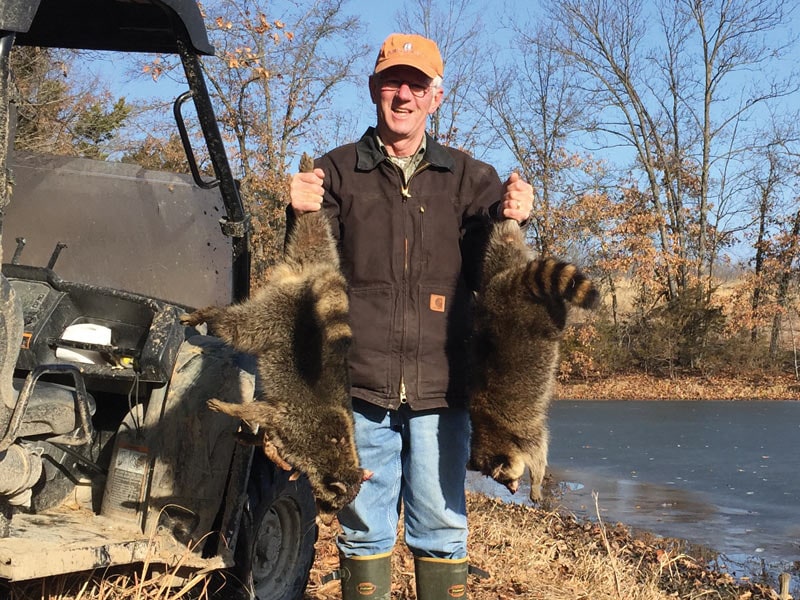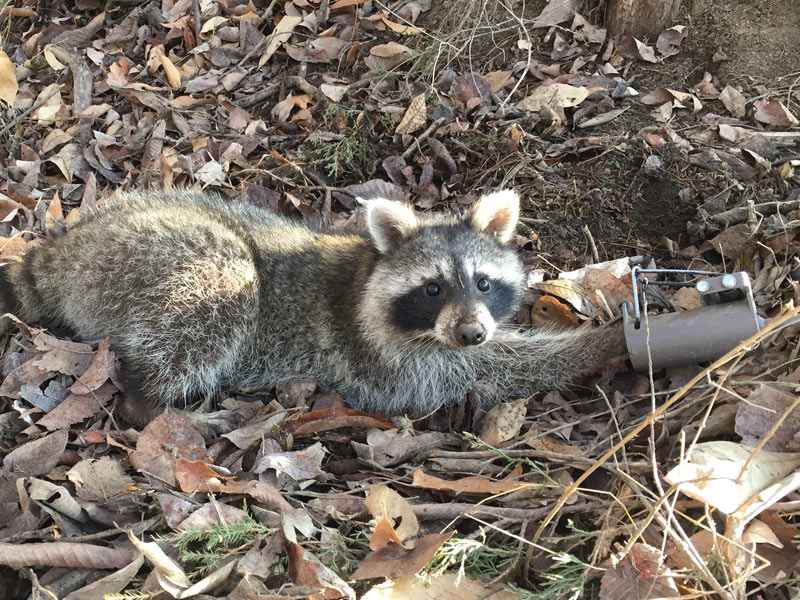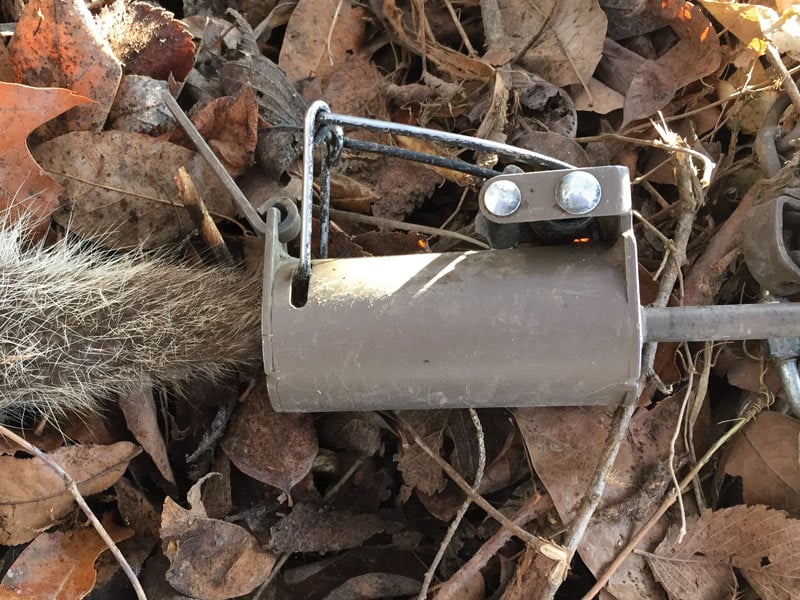Running the Trapline

It was Déjà vu for me, running the trap line with son-in-law Nick; 40 years had passed since I had trapped for furbearing animals. Dad was a trapper, and as a youngster, I’d gone with him many times before having my own line with brother Jerry – as a teenager. We caught mostly muskrats, ‘possums and ‘coons – and yes, a few skunks.
They call it a trap line, though it’s only straight between any two traps — with many zigs and zags, based on the topography of the land and the habitat. Sometimes all the traps were on just one farm, but in other cases, it might cover several farms. Early in the season we might have 75 traps out, but the number always got smaller as the season went on.
When Dad was a trapper his primary reason for trapping was to add a few dollars to the family budget during the fall/winter months, when he was laid off from his job at the rock quarry – our family was always short on money during the winter. He trapped mostly foxes, coyotes, raccoons, opossums, muskrat and mink; there weren’t any bobcats around home during those days. He used the

standard Victor leg-hold traps of the time, but added the Conibear when it became popular in the 1960s. Dad patiently skinned each animal, stretched the hides on hand-made wooden boards for curing and took them to market in late winter – when the prices were usually highest.
In my early years, Dad would take us boys along, on the weekends. Watching him kill and remove foxes and coyotes from the traps, then carefully, patiently rebuilding the sets was always interesting. Setting muskrat traps in the frozen farm ponds wasn’t nearly as complicated, but yielded more fur.
In today’s world, fur prices aren’t usually a motivating factor for trapping; instead, it’s predator control. The year-round predators for deer and turkey are coyotes and bobcats and we target them during both the trapping and hunting seasons. Raccoons and opossums are called nesting predators and we go after them only during the trapping season with modern “dog-proof” traps. Otters can destroy a bass lake quickly, but are no match for a Conibear trap. I wouldn’t want to have to trap for a living, like Dad, but it’s always great to have a chance to reflect on some of the pleasant evens of my youth.

